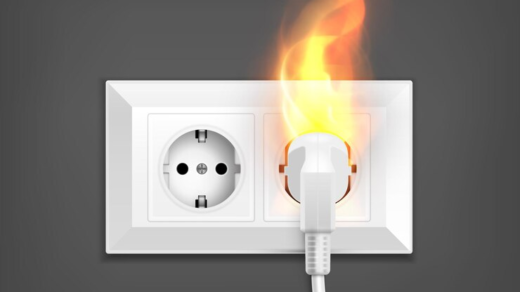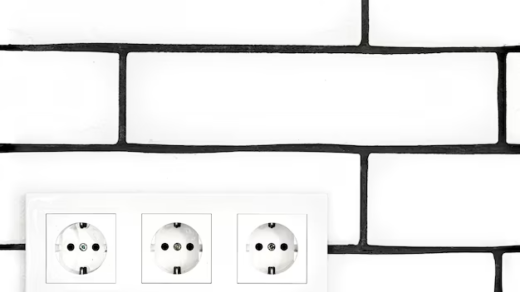Many homeowners often observe a peculiar phenomenon: ants congregating around or inside electrical outlets. At first glance, this behavior might seem bewildering, but several factors attract these tiny insects to electrical fixtures. This article delves into the reasons behind this attraction and provides solutions to prevent future invasions.
Table of Contents
- Why are Ants Attracted to Electrical Outlets?;
- The Electromagnetic Appeal to Ants;
- Searching for Moisture and Warmth;
- The Role of Pheromones in Guiding Ants;
- Preventative Measures: Keeping Ants Away from Outlets;
- Ant Infestation: Steps to Take;
- Conclusion.
Why are Ants Attracted to Electrical Outlets?
- Warmth: Electrical outlets, especially when in use, can emit warmth. For ants, particularly during colder months, this warmth can be inviting;
- Moisture: Depending on the location and condition of the outlet, some might accumulate moisture. Ants are constantly in search of water sources, making these outlets an attractive destination;
- Traces of Food: Sometimes, the smallest crumbs or traces of sugary substances can attract ants. If food residue is nearby or inside the outlet, ants are more likely to be drawn to it;
- Pheromone Trails: When ants find a good source of food or water, they leave a pheromone trail for other ants to follow. If an ant has found its way to or inside an outlet and left a trail, other ants will follow;
- Protection from Predators: Outlets and their associated wiring pathways can offer a secure route or refuge for ants, shielding them from potential predators.
The Electromagnetic Appeal to Ants
Modern homes are filled with electronic devices, and these devices, along with the infrastructure supporting them, such as electrical outlets, produce electromagnetic fields. Intriguingly, ants, with their complex sensory systems, are sensitive to these fields. Preliminary research has provided insights suggesting that the electromagnetic emissions might interfere with or mimic the Earth’s natural magnetic fields, which many insects, including ants, use for navigation. Consequently, outlets, electrical cords, and devices radiating these fields may inadvertently become intriguing landmarks or points of interest for ants, making them potential sites for exploration or congregation.
Searching for Moisture and Warmth
Electrical outlets, especially those situated in humid parts of the home or those near potential food sources, can unwittingly become moisture traps. Over time, condensation or accumulated humidity can create a micro-environment that might seem like an oasis to ants. Furthermore, the warmth generated by the flow of electrical currents can amplify this appeal. For ants, especially in cooler periods or in homes with temperature fluctuations, these outlets offer a dual attraction: both moisture and a potential haven of warmth.
The Role of Pheromones in Guiding Ants
When ants find a resource, they leave a pheromone trail to guide their colony members to the location. If an ant finds its way into an outlet and considers it a suitable site for any reason, it might leave such a trail, attracting more ants to the area.

Preventative Measures: Keeping Ants Away from Outlets
Maintaining a home free from ants and other pests involves a holistic approach that extends beyond just addressing electrical outlets. These creatures are drawn to various factors in a living space, and addressing these can significantly reduce unwanted visits. Here are expansive measures homeowners can adopt:
- Home Fortification: It’s vital to ensure the integrity of your home’s structural boundaries. Regularly inspect and seal any gaps, cracks, or breaches not only in walls but also around windows, door frames, and foundational areas. This act not only deters ants but also other pests that might seek entry Consider installing fine-meshed screens on windows and ventilation points to further block small insects;
- Hygiene and Cleanliness: While keeping areas around outlets clean is crucial, it’s equally important to maintain cleanliness throughout the home. This involves regular vacuuming, sweeping, and wiping of floors, countertops, and hidden nooks;
- Properly store food in sealed containers and promptly clean any food spills, especially sweet or sticky substances that are particularly enticing to ants;
- Natural Deterrents and Safe Repellents: The use of natural repellents can offer a safe and environmentally friendly method to deter ants. Essential oils such as peppermint, eucalyptus, and lemon can act as effective deterrents when applied appropriately. Place a few drops on cotton balls and strategically place them around vulnerable points, but always exercise caution near electrical areas;
- Plants like lavender and mint can also be placed around the home as natural ant repellents;
- Regulating Humidity: High humidity can attract various pests, including ants. Using dehumidifiers, especially in areas prone to moisture like basements or bathrooms, can help. Additionally, ensuring proper ventilation, fixing leaky pipes, and addressing damp areas are essential steps in regulating a home’s moisture levels.
Ant Infestation: Steps to Take

Discovering ants within your home’s electrical outlets can be both surprising and concerning. These tiny invaders not only pose a potential threat to your electrical systems but can also be indicative of a more extensive pest issue in your home. Here’s a detailed action plan to manage and resolve the situation:
- Immediate Safety Measures: Before taking any action, ensure your safety by turning off the power to affected outlets. This prevents potential electrical hazards during the remediation process. It’s also advisable to use an electrical tester to confirm there’s no current flowing through the outlet;
- Engaging Professional Assistance: While minor ant issues can often be addressed independently, an infestation within electrical outlets might warrant expert intervention. Pest control professionals have the expertise and tools to safely handle such situations without causing damage to the electrical system or the home’s structure. It’s also worth consulting an electrician post-remediation to ensure the integrity of your electrical system;
- Thorough Cleaning and Remediation: Ants are guided by pheromone trails. Hence, simply removing visible ants might not deter others from following the same route. Clean the surrounding areas of the outlets with a mild detergent or a vinegar solution, ensuring that you wipe away these guiding trails. Consider using natural ant deterrents, such as essential oils or diatomaceous earth, in the vicinity (but not directly inside) of the outlets;
- Proactive Prevention: After addressing the immediate concern, shift the focus to long-term prevention. Identify and seal off any potential entry points in and around your home. This might involve caulking gaps, ensuring windows and doors fit snugly, and addressing any structural vulnerabilities. Regularly inspect and clean areas around electrical fixtures and other common ant attractions in the house. By keeping these spaces free from food particles and residues, you reduce the likelihood of future infestations;
- Educate and Stay Informed: Equip yourself with knowledge about the specific ant species you’re dealing with. Different ants might have different habits, preferred food sources, and nesting preferences. Knowing your enemy can make prevention and treatment more effective.
Conclusion
Ants are drawn to electrical outlets due to a mix of their natural behaviors and the conditions in our homes, from electromagnetic fields to the quest for warmth and moisture. While pheromone trails amplify this attraction, maintaining a clean, well-sealed home can deter such invasions. When faced with an infestation, safety measures combined with professional advice can ensure effective resolution. Homeowners’ vigilance and knowledge play a crucial role in keeping homes ant-free.







